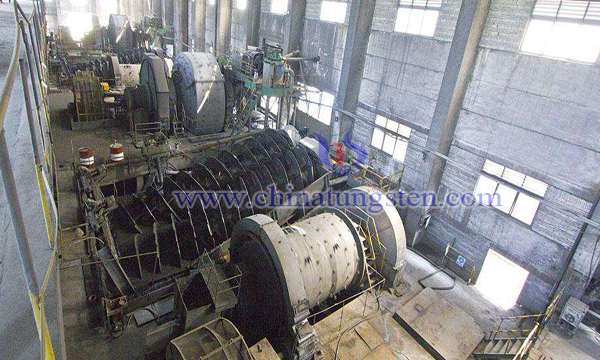How to Use Soluble Organic Phytate to Decompose Scheelite
- Details
- Category: Tungsten Information
- Published on Saturday, 30 March 2019 19:43
China is rich in tungsten resources, ranking first in the world, of which scheelite accounts for more than 70%. There are many processing technologies for scheelite, among which sodium-alkali decomposition is the most important one at present. This method can effectively decompose scheelite, but its common problem is that the amount of alkali used is large, usually 2.5-3 times the theoretical amount of alkali used or even higher; in addition, high temperature, high pressure and other means are needed to promote the decomposition of scheelite.

Because of the high energy consumption and reagent consumption of this method, the production cost remains high. At the same time, the discharge of inorganic salts has a negative impact on the ecology. The alkali embrittlement problem of weld seam in autoclave caused by high alkali concentration also has some potential safety hazards.
Based on the above situation, some scholars put forward a new idea, using soluble organic phytate which can be extracted from rice bran, bran and other cereal agricultural products as leaching agent, using its characteristic that it can react with Scheelite at atmospheric pressure to form water-insoluble organic calcium salt, so that tungsten can be leached, and tungstate can enter the solution in the form of tungstate radical. The decomposition process is as follows:
0.1 mol sodium phytate and 20 g NaOH were added into deionized water and the volume was set to 100 ml. The scheelite with particle size less than 300 mesh and 100 g WO3 content of 45% was added into the mixed solution of sodium phytate and NaOH. The solid-liquid separation of scheelite was achieved after 5 hours of stirring reaction at 90 ~℃. The decomposition rate of scheelite was 99.2%. The decomposition residue of 20 g was added into the mixture of dilute sulfuric acid and sodium sulfate at 100 ml pH 3 to control the sulfate radical. The concentration is 100g/L and the reaction time is 10h at 50 ℃. After filtration, the filtrate is returned to the next batch of scheelite decomposition and batching process.
Using organic reagent as leaching agent can greatly reduce the consumption of NaOH and overcome the shortcomings of large amount of alkali and high energy consumption in traditional alkali process. The leaching residue is treated by acidic solution, and the solution is returned to scheelite decomposition process after adjusting the pH value to realize the regeneration of leaching agent. Only the amount of alkali used in the whole process is equivalent to the theoretical amount, which greatly reduces the production cost and the discharge of inorganic salts in the smelting process. It has remarkable ecological benefits.
- Tungsten Manufacturer & Supplier, Chinatungsten Online: www.chinatungsten.com
- Tungsten News & Prices of China Tungsten Industry Association: www.ctia.com.cn
- Molybdenum News & Price: news.molybdenum.com.cn
- Tel.: 86 592 5129696; Fax: 86 592 5129797; Email: sales@chinatungsten.com



 sales@chinatungsten.com
sales@chinatungsten.com